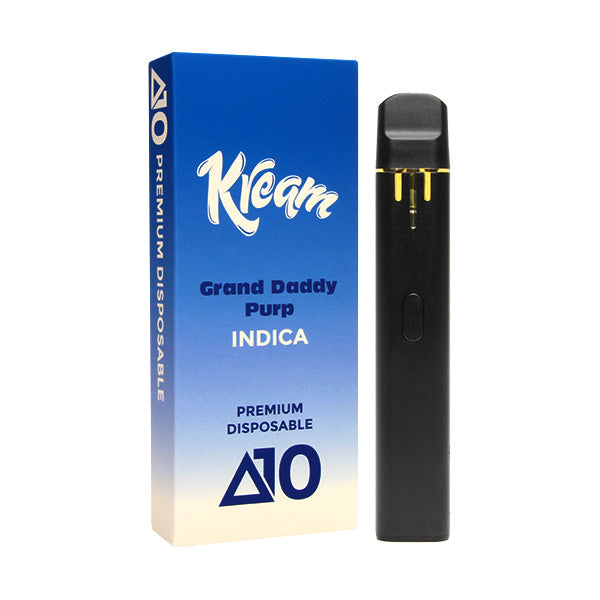Discover the Perfect Blend of Taste and Ease with Kream Disposable Vape Pens
Discover the Perfect Blend of Taste and Ease with Kream Disposable Vape Pens
Blog Article
Discovering the Environmental Influence of Disposable Vape Pens: What You Required to Know
In the world of non reusable vape pens, a closer exam of their environmental effect discloses a complex web of interconnected elements that warrant our focus. From the production processes and materials used to their eventual disposal and effect on air top quality, the ramifications of these seemingly convenient devices expand much past their instant use. Understanding the complete scope of their environmental footprint is vital for making educated decisions concerning our usage behaviors and the possible alternatives available.
Production Procedures and Products
Disposable vape pens are usually made making use of a variety of materials and processes that can have substantial environmental ramifications. The main parts of non reusable vape pens include a battery, heating element, e-liquid tank, and a mouthpiece. The battery is typically made of lithium, a non-renewable source that needs substantial energy to extract and process. The e-liquid tank is frequently made from plastic, contributing to the environmental worry due to its non-biodegradable nature. The burner, typically made from metal alloys, also adds to the ecological impact through the removal and handling of resources.
Moreover, the manufacturing processes included in generating non reusable vape pens can better worsen their environmental impact. Thinking about these variables, it is vital for manufacturers and customers to be mindful of the environmental effects connected with the manufacturing and usage of disposable vape pens.
Power Intake in Production
Throughout the manufacturing process of non reusable vape pens, the power consumption entailed plays a significant function in establishing their general ecological effect. The production of disposable vape pens calls for energy for numerous phases, including extraction and handling of resources, producing parts like batteries and home heating aspects, product packaging, transport, and assembly. The removal and handling of products such as chemicals, metals, and plastics demand substantial power inputs, adding to the total carbon impact of the product. Additionally, the manufacturing procedures associated with producing the detailed parts of vape pens, such as batteries and digital wiring, rely greatly on energy-intensive procedures.
To deal with the environmental effects of power intake in production, manufacturers can take on much more sustainable techniques. This can include using sustainable power sources for making operations, enhancing production processes to reduce power waste, and implementing energy-efficient modern technologies. By prioritizing energy performance and sustainability in production, the environmental impact of disposable vape pens can be lessened, adding to a greener and more accountable vaping market.
Disposal and Waste Monitoring

Disposable vape pens have elements such as batteries, digital circuits, and plastic cases that can be dangerous otherwise disposed of properly (kream disposable). The lithium-ion batteries in vape pens, for circumstances, position a considerable threat if they end up in land fills, as they can leak hazardous substances into the soil and water supply
To address this concern, consumers ought to be educated on the correct disposal approaches for vape pens. Recycling programs specifically created for electronic waste must be promoted to encourage individuals to reuse their non reusable vape pens responsibly. Additionally, suppliers should take into consideration implementing take-back programs to assist in the secure disposal and recycling of these devices. By boosting disposal methods and waste administration strategies, the environmental effect of disposable vape pens can be considerably reduced.
Influence on Air High Quality
The presence of non reusable vape pens adds to the degradation of air quality in urban settings where their usage is common. They release harmful substances right into the air when people make use of disposable vape pens. These gadgets discharge unstable organic compounds (VOCs) like acetaldehyde, acrolein, and formaldehyde, as well as ultrafine fragments that can see this pass through deep into the lungs. These exhausts can respond with various other toxins in the environment, creating additional contaminants that present risks to human wellness and the setting. kream disposable.
Additionally, the disposal of vape pen batteries, which usually have hefty steels like cobalt, nickel, and lithium, can lead to air pollution otherwise handled effectively. Incorrect disposal techniques, such as incineration or landfilling, can release these poisonous steels into the air, adding to air pollution and possibly causing harm to human health and wellness.
To alleviate the impact of disposable vape pens on air top quality, advertising awareness about correct disposal approaches, urging reusing programs for vape pens and batteries, and educating users regarding the ecological consequences of these devices are important action in decreasing their ecological footprint.
Alternatives and Sustainable Choices
Taking into account the environmental effect presented by disposable vape pens, checking out alternatives and sustainable selections is critical for minimizing environmental damage. One lasting option is to switch over to refillable vape pens that enable users to charge the gadget with e-liquid, considerably decreasing the quantity of waste generated. These refillable pens frequently have longer life expectancies, leading to fewer devices finishing up in landfills. Additionally, picking vape pens made from recyclable materials can additionally lessen the environmental footprint. Suppliers are progressively supplying eco-friendly options, such as pens built from recycled metals or biodegradable plastics.
Additionally, some business have started carrying out take-back programs for used vape pens, where they accumulate and recycle the tools effectively. Motivating responsible disposal techniques among customers can additionally contribute to alleviating the environmental impact connected with vape pens.
Conclusion
Finally, the environmental influence of disposable vape pens is significant, with adverse effects on air high quality, power usage in manufacturing, and waste management. It is essential for consumers to think about the sustainability of their selections and choose choices that have a lower ecological impact. By making notified choices and supporting sustainable practices, people can contribute to decreasing the ecological injury caused by non reusable vape pens.

Efficient disposal and reliable waste administration are important aspects to take into consideration when evaluating the environmental effect of non wikipedia reference reusable vape pens. By improving disposal methods and waste management methods, the environmental influence of disposable vape pens can be dramatically decreased.
In conclusion, the ecological influence of non reusable vape pens is substantial, with adverse impacts on air high quality, energy consumption in manufacturing, and waste monitoring.
Report this page